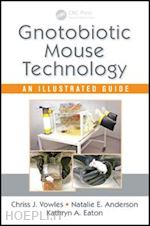Chriss J. Vowles co-manages a multi-investigator germ-free research laboratory at the University of Michigan in Ann Arbor. He began his career at the University of Michigan in 2003, working full-time as a husbandry technician in the Unit for Laboratory Animal Medicine. In 2006, he discovered gnotobiotic technology. At that time, the Germ Free Laboratory was just starting. Chriss joined the research group on the ground floor and has been growing with it ever since. The idea of maintaining a germ-free, complex organism fascinated him then and still captivates him today. After eight years of maintaining a germ-free colony of mice, the laboratory is still evolving, he is still learning, and his trials, tribulations, and rewards are constant. Natalie E. Anderson is a research technician lead at the University of Michigan’s Germ Free Core. In 2009, she graduated from Michigan State University with a bachelor’s degree in animal science and accepted a position with SoBran’s contract for the National Institute of Allergy and Infectious Diseases (NIAID). In December 2010, she returned to Michigan to take a position with the University of Michigan’s Unit for Lab Animal Medicine. Shortly thereafter, she started working part-time in the Germ Free Core and quickly learned to love the daily challenges involved in maintaining a germ-free colony. Natalie joined the core full time in July 2013. Kathryn A. Eaton has been working with germ-free and gnotobiotic animal models for 30 years. She started her gnotobiology career at Ohio State University, where she did her PhD research on Helicobacter pylori in gnotobiotic piglets. She went on to study mice several years later, and in 2004 she established the University of Michigan Germ Free Mouse Laboratory, which she now directs. Dr. Eaton is a board-certified veterinary pathologist with research interests in bacterial enteric disease and immunology. In addition to H. pylori, she has worked with gnotobiotic animal models of shigatoxigenic Escherichia coli, inflammatory bowel disease, and, most recently, the roles of the enteric microbiome in health and disease. She has long been a staunch supporter of gnotobiotic research and is greatly encouraged by the recent explosion of new investigations, methods, and models that have enhanced the utility and availability of germ-free animal models of disease.












